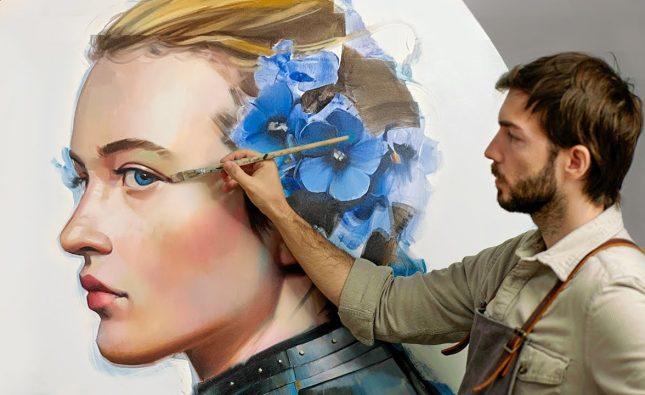
Art has always been a powerful tool for communication and expression. It has the ability to transcend language barriers and cultural differences, bringing people together and fostering understanding. In recent years, there has been a growing trend towards cross-cultural and interdisciplinary art, which combines elements from different cultures and disciplines to create something new and unique. This type of art has the potential to have a significant impact on society, both in terms of promoting cultural exchange and in addressing social issues.
Cross-cultural art is a form of art that combines elements from different cultures. This can include visual art, music, dance, and theater. By bringing together different cultural traditions, cross-cultural art can create a new and unique form of expression that is both inclusive and diverse. This type of art can also promote cultural exchange and understanding, as it allows people to learn about and appreciate different cultures.
Interdisciplinary art, on the other hand, combines elements from different disciplines, such as science, technology, and engineering, with art. This type of art can be used to address social issues and promote innovation. For example, an interdisciplinary art project might combine art and technology to create a new form of interactive art that engages the audience in a dialogue about environmental issues.
The impact of cross-cultural and interdisciplinary art on society can be significant. By promoting cultural exchange and understanding, this type of art can help to break down barriers between different cultures and promote a more inclusive and diverse society. It can also be used to address social issues, such as climate change, poverty, and inequality. By combining art with other disciplines, interdisciplinary art can promote innovation and new ways of thinking about these issues.
One example of cross-cultural and interdisciplinary art is the work of the artist Olafur Eliasson. Eliasson’s work combines elements from different cultures and disciplines to create immersive installations that engage the audience in a dialogue about environmental issues. His work often incorporates natural elements, such as water and light, to create a sense of wonder and awe. By combining art with science and technology, Eliasson’s work promotes innovation and new ways of thinking about environmental issues.
Another example of cross-cultural and interdisciplinary art is the work of the artist Ai Weiwei. Weiwei’s work combines elements from different cultures and disciplines to create provocative installations that address social issues, such as human rights and freedom of expression. His work often incorporates traditional Chinese art forms, such as calligraphy and porcelain, to create a sense of cultural exchange and understanding.
In conclusion, cross-cultural and interdisciplinary art has the potential to have a significant impact on society. By promoting cultural exchange and understanding, this type of art can help to break down barriers between different cultures and promote a more inclusive and diverse society. It can also be used to address social issues and promote innovation. As artists continue to explore new ways of combining different cultures and disciplines, the impact of cross-cultural and interdisciplinary art on society is sure to grow.










